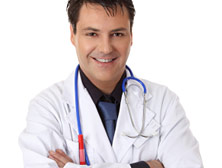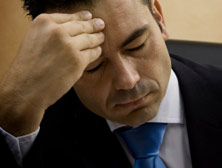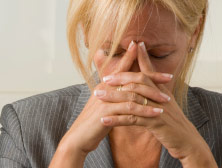MigraineHelper.com
 |
 |
 |
 |
|
Teen Troubles"If your adolescent has a headache he more than likely is really having a headache," says researcher Paul Winner, MD, director of the Palm Beach Headache Clinic and professor of neurology, Nova Southeastern University, Fort Lauderdale, Fla. "Headaches are causing a lot of disability in the nation's youth." Listen to Them, They Aren't Faking
If your teen is always complaining about having a headache, it is good practice to listen to him rather than writing the complaint off as a way to cut class or avoid a tough assignment. Findings of a nationwide survey indicated that in a one-year period, 5% of boys and 7.7% of girls reported frequent migraines. It is common for teenagers to have migraines and it is equally common that they are not receiving appropriate treatment for these debilitating headaches. Which Children Are More Affected
The results of the study showed that the frequency of migraine headaches in adolescent sufferers continued to increase with age. "The child initially might have one or two headaches a month and then a couple of years later have 10 or 15 headaches a month," Winner says. "They seem to transition quickly. These kids need help." The study showed that young girls, beginning at age 14 and teens of both sexes from poorer families (earning less than $22,500 annually) had higher rates of migraine headaches, according to Winner. Use of OTCs and Prescription Drugs
When it comes to treatment, many teens use over-the-counter medications, or sometimes prescriptions, to relieve the symptoms. Teen migraines tend to last for a shorter period of time than they do in adults, which is one reason why it has been difficult to prove the value of migraine medicines in youth. A leading study shows that while the drugs are very effective, they are also very costly. The study has shown that teens do very well with home-based programs that help them prevent and deal with their headaches, thus keeping the cost of medications down. Besides, many parents are not too keen on having their teens take drugs to manage pain. There Is Another Way
Constance K. Cottrell, PhD, is project manager for headache treatment research at Ohio University, Athens and Columbus. A home-based behavioural therapy program was developed by her team which teaches teens to use a biofeedback machine along with relaxation techniques to manage migraines. When compared with drug use to manage pain, it was found that drugs such as Amerge, Imitrex, Maxalt, and Zomig are all effective, but they work much differently in teens than in adults. "Taking these drugs can actually disable the kid for longer than the headache would," she says. "There was one child who slept for 36 hours every time he took a Maxalt. The pain was gone, but it didn't help him live his life." Improved Quality of Life and Pain Relief
It was found that behavioral therapy worked just as well as the drugs, resulting in fewer headaches and a significant improvement to the quality of life. "The behaviour program taught them to identify their migraine triggers, how to avoid them, how to manage pain when they had it, how to take medications effectively, and how to think differently about headaches so they could manage them better." Cottrell says.
|
n |